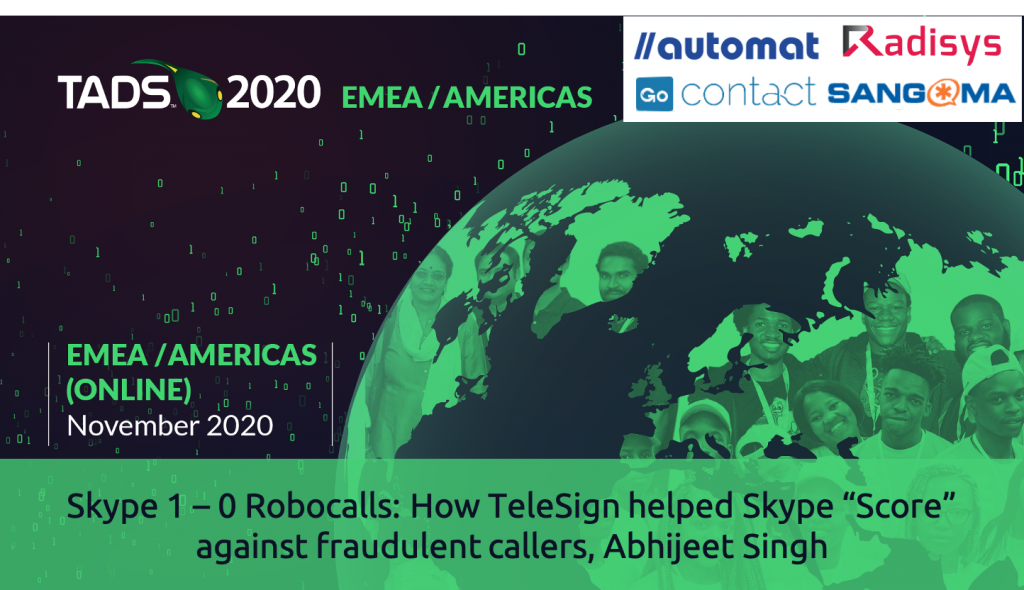Skype 1 – 0 Robocalls: How TeleSign helped Skype “Score” against fraudulent callers. Abhijeet Singh, Senior Product Manager, TeleSign
Here are a couple of excellent introductions to Telesign from previous TADSummits:
- At TADSummit Americas 2019, a keynote from Pierre Demarche, VP Product and Marketing, TeleSign on Identity, Authentication, and Programmable Telecoms.
- At TADSummit Asia 2020, a keynote from Stacy Stubblefield co-founder of TeleSign who now drives TeleSign’s product strategy and innovation.
Abhijeet focused on the case study with Skype. The volume of the robocalling problem Skype faced surprised me: 1 million incoming robocalls per day! Skype has about 100 million monthly users and 40 million daily users. It’s still a significant communications service provider. I use it mainly with my family in the UK, and the few die-hards like me that have the app in their system tray.
Abhijeet provides some great quantification on the volume of robocalls (both good and bad), with scams accounting for 40% of the calls, resulting in $20B in losses in the US alone. It’s a massive business.
I’ve experienced a scam when a friend had their phone stolen, and I received a text asking for a favor involving gift vouchers. It was plausible and contextually relevant, they’d done their research. Only when I asked for an identity check, did the attempted fraud become apparent. If only people would put their smarts to good rather than bad.
I’d always assumed the US was the robocalling capital of the world, but the averaged rate is only 18 robocalls per user per month. Brazil is 46 robocalls per month, and India 26. As shared in my experience above, the scammers do their homework on the person being called, also taking advantage of seasonal events and use of local numbers to make the call / communication seem plausible.
The incoming calls aren’t just direct to Skype, it’s also though diverted calls from work or personal phone numbers to Skype as well. And the impact, which we all experience, is you distrust any call that isn’t on your contact list. For home phones this generally means people no longer use the phone service.
Abhijeet then runs through how Score is derived, all the data sources, and 2200+ behavioural variables. What was achieved with Skype is half the inbound calls were blocked, improving average call durations, lowering abuse reports with no negative PR (false negatives). Please get in contact with Abhijeet if you’d like to learn more. Identity management can be used across many aspects of the customer’s journey. As discussed in these presentations:
- At TADSummit Americas 2019, a keynote from Pierre Demarche, VP Product and Marketing, TeleSign on Identity, Authentication, and Programmable Telecoms.
- At TADSummit Asia 2020, a keynote from Stacy Stubblefield co-founder of TeleSign who now drives TeleSign’s product strategy and innovation.
Slideshare is having difficulties today, here’s a direct link to Abhijeet’s slides.
Agenda Description
Robocalling has caused a major customer experience issue and causes severe reputational damage for communication apps and services. This session will touch upon how TeleSign helped Skype screen and flag around 1 million incoming Robocalls per day to Skype provided private virtual numbers by leveraging Score’s global network consortium and machine learning capabilities thereby protecting the end-user interests and safeguarding them against these fraudulent calls.


Thanks for the case study and some interesting quantification of the robocalling problem. Identity verification is an exploding businesses. What are the top use cases you see in the market today?